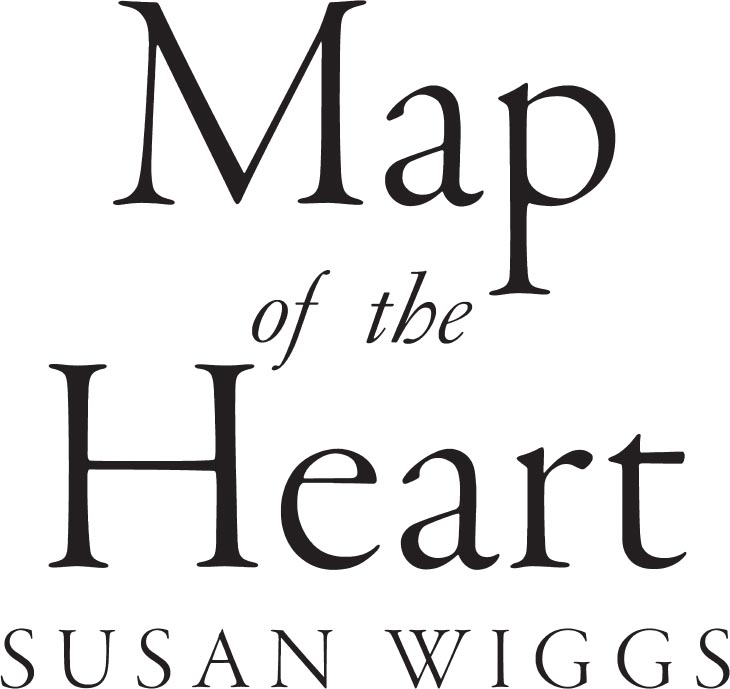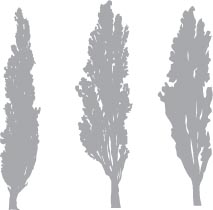
Полная версия:
Map of the Heart



Copyright
Published by HarperCollinsPublishers Ltd
The News Building
1 London Bridge Street
London, SE1 9GF
www.harpercollins.co.uk
Published by HarperCollinsPublishers 2017
Copyright © Susan Wiggs 2017
Cover design and illustration by Alan Dingman © HarperCollinsPublishers Ltd 2017
Susan Wiggs asserts the moral right to be identified as the author of this work.
A catalogue copy of this book is available from the British Library.
This novel is entirely a work of fiction. The names, characters and incidents portrayed in it are the work of the author’s imagination. Any resemblance to actual persons, living or dead, events or localities is entirely coincidental.
All rights reserved under International and Pan-American Copyright Conventions. By payment of the required fees, you have been granted the non-exclusive, non-transferable right to access and read the text of this e-book on screen. No part of this text may be reproduced, transmitted, down-loaded, decompiled, reverse engineered, or stored in or introduced into any information storage and retrieval system, in any form or by any means, whether electronic or mechanical, now known or hereinafter invented, without the express written permission of HarperCollins.
Source ISBN: 9780008151324
Ebook Edition © August 2017 ISBN: 9780008151331
Version: 2017-09-28
Dedication
For my husband, Jerry: For all the journeys we’ve made, for all the moments of inspiration, for getting lost on lost byways, for endless rambles and flights of imagination, for knowing that the greatest journey in life is the one that takes you home. You’re the best adventure I’ve ever had.

Contents
Cover
Title Page
Copyright
Dedication
Part 1: Bethany Bay
Chapter One
Chapter Two
Chapter Three
Chapter Four
Chapter Five
Chapter Six
Chapter Seven
Chapter Eight
Part 2: The Var
Chapter Nine
Chapter Ten
Part 3: Bethany Bay
Chapter Eleven
Chapter Twelve
Chapter Thirteen
Chapter Fourteen
Part 4: Bellerive
Chapter Fifteen
Chapter Sixteen
Part 5: Aix-en-Provence
Chapter Seventeen
Part 6: The Var
Chapter Eighteen
Part 7: Switchback
Chapter Nineteen
Chapter Twenty
Chapter Twenty-one
Epilogue
Acknowledgments
Keep Reading …
About the Author
Also by Susan Wiggs
About the Publisher
PART 1
Bethany Bay

Thank you for all the Acts of Light which beautified a summer now passed to its reward.
—LETTER FROM EMILY DICKINSON TO MRS. JOHN HOWARD SWEETSER
One

Of the five steps in developing film, four must take place in complete darkness. And in the darkroom, timing was everything. The difference between overexposure and underexposure sometimes came down to a matter of milliseconds.
Camille Adams liked the precision of it. She liked the idea that with the proper balance of chemicals and timing, a good result was entirely within her control.
There could be no visible light in the room, not even a red or amber safelight. Camera obscura was Latin for “dark room,” and when Camille was young and utterly fascinated by the process, she had gone to great lengths to practice her craft. Her first darkroom had been a closet that smelled of her mom’s frangipani perfume and her stepdad’s fishing boots, crusted with salt from the Chesapeake. She’d used masking tape and weather stripping to fill in the gaps, keeping out any leaks of light. Even a hairline crack in the door could fog the negatives.
Found film was a particular obsession of hers, especially now that digital imagery had supplanted film photography. She loved the thrill of opening a door to the past and being the first to peek in. Often while she worked with an old roll of film or movie reel, she tried to imagine someone taking the time to get out their camera and take pictures or shoot a movie, capturing a candid moment or an elaborate pose. For Camille, working in the darkroom was the only place she could see clearly, the place where she felt most competent and in control.
Today’s project was to rescue a roll of thirty-five-millimeter film found by a client she’d never met, a professor of history named Malcolm Finnemore. The film had been delivered by courier from Annapolis, and the instructions inside indicated that he required a quick turnaround. Her job was to develop the film, digitize the negatives with her micrographic scanner, convert the files into positives, and e-mail the results. The courier would be back by three to pick up the original negatives and contact sheets.
Camille had no problem with deadlines. She didn’t mind the pressure. It forced her to be clearheaded, organized, in control. Life worked better that way.
All her chemicals waited in readiness—precisely calibrated, carefully measured into beakers, and set within reach. She didn’t need the light to know where they were, lined up like instruments on a surgeon’s tray—developer, stop bath, fixer, clearing agent—and she knew how to handle them with the delicacy of a surgeon. Once the film was developed, dried, and cured, she would inspect the results. She loved this part of her craft, being the revealer of lost and found treasures, opening forgotten time capsules with a single act of light.
There were those, and her late husband, Jace, had been among them, who regarded this as a craft or hobby. Camille knew better. One look at a print by Ansel Adams—no relation to Jace—was proof that art could happen in the darkroom. Behind each finished, epic print were dozens of attempts until Adams found just the right setting.
Camille never knew what the old film would reveal, if it hadn’t been spoiled by time and the elements. Perhaps the professor had come across a film can that had been forgotten and shoved away in the Smithsonian archives or some library storage room at Annapolis.
She wanted to get this right, because the material was potentially significant. The roll she was carefully spooling onto the reel could be a major find. It might reveal portraits of people no one had ever seen before, landscapes now changed beyond recognition, a rare shot of a moment in time that no longer existed in this world.
On the other hand, it might be entirely prosaic—a family picnic, a generic street scene, awkward photos of unidentifiable strangers. Perhaps it might yield pictures of a long-gone loved one whose face his widow longed to see one more time. Camille still remembered the feeling of pain-filled joy when she’d looked at pictures of Jace after he’d died. Her final shots of him remained in the dark, still spooled in her camera. The vintage Leica had been her favorite, but she hadn’t touched it since the day she’d lost him.
Working with film from complete strangers suited her better. Only last week, a different storage box had yielded a rare collection of cellulose-nitrate negatives in a precarious state. The images had been clumped together, fused by time and neglect. Over painstaking hours, she had teased apart the film, removing mold and consolidating the image layers to reveal something the camera’s eye had seen nearly a century before—the only known photograph of a species of penguin that was now extinct.
Another time, she had exposed canned negatives from a portrait session with Bess Truman, one of the most camera-shy first ladies of the twentieth century. To date, the project that had gained the most attention for Camille had been a picture of a murder in commission, posthumously absolving a man who had gone to the gallows for a crime he hadn’t committed. Write-ups in the national press gave her credit for solving a long-standing mystery, but Camille considered the achievement bittersweet, knowing an innocent man had hanged for a crime while the murderer had lived to a ripe old age.
Touching the digital timer, she scarcely dared to breathe as she prepared to launch the special alchemy of the darkroom.
The moment was interrupted by a ringing phone, located just outside the door. She couldn’t have a phone in the darkroom, due to the keypad that lit up when it rang, so she kept the volume turned on loud to hear incoming voice mail. Ever since her father’s cancer diagnosis, her pulse jumped each time the phone rang.
She waited through several rings, chiding herself for panicking. Papa’s disease was in remission now, though his doctors wouldn’t say how long the reprieve might last.
“This is Della McClosky of the Henlopen Medical Center, calling for Camille Adams. Your daughter Julie has been brought into the ER—”
Julie. Camille ripped open the door of the darkroom and snatched up the phone. The film can clattered to the floor. Already, fear thudded through her. “This is Camille. What’s Julie doing in the ER?”
“Ma’am, your daughter has just been brought by ambulance to the ER from her surf rescue class at the Bethany Bay Surf Club.”
Ice-cold terror. It took her breath away. “What? Is she hurt? What happened?”
“She’s conscious now, sitting up and talking. Coach Swanson came with her. She got caught in a riptide and aspirated some water. The doctor is checking her out.”
“I’m on my way.” She lunged for the back door, scooping her keys from the hook as she leaped down the porch steps to her car. There was no thought. No planning. Just action. When you get a call that your kid is in the ER, there can be no room for thinking. Just the deepest fear imaginable, the kind that gripped like a steel band around her chest.
She hurled herself into the car, started it up, and tore down the driveway, her tires spitting an arc of crushed oyster shells in her wake. She roared around Lighthouse Point at the end of her road. The rocky shoals there had been guarded for a century by the sentinel overlooking the bay.
The car radio was on, broadcasting a surf report at the top of the hour by Crash Daniels, owner of the Surf Shack. “We are getting our first taste of summer, people. The whole Delmarva Peninsula is basking in temperatures in the mideighties. The oceanside looks rad. Bethany Bay is totally off the hook …”
She snapped off the radio. Panic about her daughter demanded total focus. Surf rescue class? What the hell was Julie doing in surf rescue? She wasn’t even taking that class, an optional PE credit offered to ninth graders. Camille had forbidden it, even though Julie had begged. Far too dangerous. The tides on the ocean side of the peninsula could be deadly. There was no satisfaction in being right. Julie got caught in a riptide, the nurse had said. A surge of horror filled Camille’s throat, and she felt like puking.
“Easy,” she told herself. “Deep breath. The woman on the phone said Julie is conscious.”
Jace had been conscious, too, moments before she had lost him forever, five years before, when they were on a romantic second-honeymoon getaway. She couldn’t stop herself from thinking about that now. That was the reason she had refused to sign the permission slip to allow Julie to participate in surf rescue. She simply couldn’t survive another loss.
There had been a time when Camille had led a charmed life, cheerfully oblivious to the devastation that could strike without warning. Throughout her idyllic childhood in Bethany Bay, she’d been as wild and carefree as the birds that wheeled over the watery enclave at the edge of the Atlantic. She herself had excelled at surf rescue, a rigorous and physically demanding course all high schoolers were encouraged to take. In this community, surrounded on three sides by water, safety skills were mandatory. Thanks to the popularity of the beach, with its pipeline waves rolling in, local youngsters were trained in the art of rescue using special hand-paddled boards. It was a time-honored tradition at Bethany Bay High. Each May, even when the water was still chilly from the currents of winter, the PE department offered the challenging class.
At fourteen, Camille had been clueless about the dangers of the world. She’d shot to the head of her group in surf rescue, ultimately winning the annual competition three years in a row. She remembered how joyful and confident the victory had made her feel. She still remembered reveling in the triumph of battling the waves under the sun, laughing with her friends, intoxicated by the supreme satisfaction of conquering the elements. At the end of the course, there was always a bonfire and marshmallow roast on the beach, a tradition still observed by the surf rescue trainers so the kids could bond over the shared experience. She wanted that for Julie, but her daughter was a different girl than Camille had been.
Up until five years ago, Camille had been an adrenaline junkie—surfing, kiteboarding, attempting harrowing rock and mountain climbs—anything that offered a dangerous rush. Jace had been her perfect partner, every bit as keen as she for the thrill of adventure.
Those days were long gone. Camille had been remade by tragedy, cautious when she used to be intrepid, fearful when she used to dare anything, restrained when she used to be unbridled. She viewed the world as a dangerous place fraught with hazards for those foolish enough to venture out and take a risk. She regarded everything she loved as fragile and apt to be lost as quickly as Jace had been.
Julie had processed the death of her father with the stoic innocence of a nine-year-old, quietly grieving and then accepting the fact that her world would never be the same. People had praised her resilience, and Camille had been grateful to have a reason to put her life together and go on.
Yet when Julie brought the permission packet home and announced she was taking surf rescue, Camille had flatly refused. There had been arguments. Tears. Stomping and flinging on the bed. Julie had accused Camille of trying to sabotage her life.
With a twinge of guilt, Camille knew her own fears were holding her daughter back, but she also knew they were keeping Julie out of harm’s way. Yes, she wanted the same kind of fun and camaraderie for Julie that she herself had found in high school. But Julie would have to find it through tamer pursuits. Apparently she had found a way to join the surf rescue class, probably with the age-old trick of the forged permission slip.
There were few forces greater than the power of a fourteen-year-old’s determination when she wanted something. A teenager would stop at nothing in order to get her way.
Camille should have been more vigilant. Instead of becoming so deeply absorbed in work, she should have kept a closer eye on her daughter. Maybe then she would have noticed what Julie was up to, sneaking off to surf rescue instead of dodgeball or study hall or some other tame substitute for the course on the beach.
When Jace was alive, he and Camille had both made sure Julie was a strong swimmer. By the age of eight, she’d learned about the way a riptide worked, and how to survive if she happened to get caught in one—tread water, stay parallel to the shore, and don’t fight it. Camille could still remember Jace explaining it. The riptide would come back around in three minutes, so there was no need to panic.
These days, panicking was Camille’s specialty.
Keeping her eyes on the road, Camille groped in her bag for her phone. Her hand bumped up against the usual suspects—wallet, pen, checkbook, hair clip, comb, mints. No phone. Shoot, she had forgotten it in her rush to get to the hospital.
The hospital, where her wounded daughter had been taken while Camille was holed up in her darkroom, ignoring the world. With each negative thought, she pressed her foot harder on the accelerator, until she realized she was going fifty in a thirty-mile-per-hour zone. She refused to ease up. If she got pulled over, she’d simply ask the police for an escort.
The word please echoed over and over in her head. She begged for this to not be happening. Please. Please not this. Please not Julie.
Fourteen, smart, funny, quirky, she was Camille’s whole world. If something happened to her, the world would end. I would simply end, thought Camille with rock-solid certainty. I would cease to exist. My life would be kaput. Over. Sans espoir, as Papa would say.
The coast road bisected the flatlands embraced parenthetically between the teeming mystery of the Chesapeake Bay, and the endless, vast expanse of the Atlantic. Fringed by sand dunes filled with native bird rookeries, the bay curved inward, framing the crashing Atlantic and forming one of the best surf beaches on the eastern seaboard. It was there, on this stunningly beautiful sugar-sand beach that drew tourists every year, that Julie’s accident had occurred.
Camille accelerated yet again, on the home stretch. Five minutes later, she careened into the parking lot of the medical center. The place held both distant and recent memories for her. She leaped from the car, hitting the ground at a run.
“Julie Adams,” she said to the woman at the reception desk. “She was brought in from surf rescue.”
The receptionist consulted her screen. “Curtain area seven,” she said. “Around to the right.”
Camille knew where that was. She ran past the memorial wall—the Dr. Jace Adams Memorial Wall, which never failed to pierce her heart with remembrances.
She missed Julie’s father every single day, but never more sharply than when she was scared. Other women could turn to their husbands when disaster struck, but not Camille. She could turn only to the sweetest of memories. In the blink of an eye, she had found and lost the love of her life. Jace would remain forever in the shadows of her memory, too distant to comfort her when she was terrified.
Which was pretty much all the time.
She hastened over to the curtain area, desperate to see her daughter. She caught a glimpse of curly dark hair, a delicate hand lying limp. “Julie,” she said, rushing to the side of the wheeled bed.
The others present parted to let her near. It was a singular nightmare to see her daughter hooked up to monitors, with medical personnel surrounding her. Julie was sitting up, a C-spine collar around her neck, several printed bands on her wrist, an IV in her arm, and an annoyed expression on her face. “Mom,” she said. “I’m okay.”
That was all Camille needed to hear—her daughter’s voice, saying those words. Her insides melted as relief unfurled her nerves.
“Sweetheart, how do you feel? Tell me everything.” Camille devoured Julie with her eyes. Did she look paler than usual? Was she in pain? Not really, Camille observed. She was wearing her annoyed teenager face.
“Like I said, I’m okay.” Julie punctuated the statement with a classic roll of the eyes.
“Mrs. Adams.” A doctor in seafoam-green scrubs and a white lab coat approached her. “I’m Dr. Solvang. I’ve been taking care of Julie.”
Like a good ER doc, Solvang went calmly and methodically through the explanation. He looked her in the eye and offered short, clear statements. “Julie reports coming off her rescue board when she was trying to knee-paddle around a buoy during a speed drill. She got caught up in an undercurrent. Julie, isn’t that right?”
“Yeah,” she mumbled.
“You mean a riptide?” Camille glared at the coach, who hovered nearby. Hadn’t he been watching? Wasn’t avoiding riptides the first lesson of surf rescue?
“Apparently, yes,” said the doctor. “Coach Swanson was able to bring Julie to shore. At that point, she was unresponsive.”
“Oh my God.” Unresponsive. Camille could not abide the image in her head. “Julie … I don’t understand. How did this happen? You weren’t even supposed to be in surf rescue.” She took a breath. “Which we’ll talk about later.”
“Coach Swanson brought her in and performed CPR, and the water she’d aspirated came up. She came around immediately and was brought here for evaluation.”
“So you’re saying my daughter drowned.”
“I got knocked off my board, is all.”
“What? Knocked off? My God—”
“I mean, I fell …” Julie said, her eyes darting around the curtain area.
“The contusion should heal just fine on its own,” Dr. Solvang said.
“What contusion?” Camille wanted to grab the guy by his crisp white lapels and shake him. “She hit her head?” She touched Julie’s chin, looking for the injury amid Julie’s dark salt-encrusted curls. There was a knot at her hairline above one eye. “How did you hit your head?”
Julie’s glance skated away. She lightly touched the damp, saltencrusted hair above her temple.
“We’ve done a neural assessment every ten minutes,” said the nurse. “Everything is normal.”
“Weren’t you wearing a safety cap?” Camille asked. “How did you get a contusion?”
“Mom, I don’t know, okay? It all happened really fast. Do me a favor and stop freaking out.”
Surliness was a new thing with Julie. Camille had started noticing it earlier in the school year. At the moment, her surliness was a hopeful sign. It meant she was feeling normal. “Now what?” Camille asked the doctor. “Are you going to admit her?”
He smiled and shook his head. “No need. The discharge papers are already being prepared.”
She melted a little with relief. “I need a phone. I dashed out of the house without mine, and I need to call my mother.”
Julie indicated her Bethany Bay Barracudas team bag. “You can use mine to call Gram.”
Camille found it and dialed her mother.
“Hey, you,” said Cherisse Vandermeer. “Did school get out early today?”
“Mom, it’s me,” said Camille. “Using Julie’s phone.”
“I thought you would be buried in your darkroom all day.”
The darkroom. Camille had an “oh shit” moment, but thrust it away in favor of the more immediate matter.
“I’m at the hospital,” Camille told her. “Julie was brought to the ER.”
“Oh, dear heavenly days. Is she all right? What happened?”
“She’s okay. She had an accident in surf rescue class. Just got here myself.”
There was an audible gasp. “I’ll be right over.”
“I’m all right, Gram,” Julie said loudly. “Mom’s freaking out, though.”
Now Camille heard a deep, steadying breath on the other end of the line. “I’m sure it’s going to be all right. I’ll see you there in ten minutes. Did they say what—”
The call dropped. Cell-phone signals were iffy this low on the peninsula.



